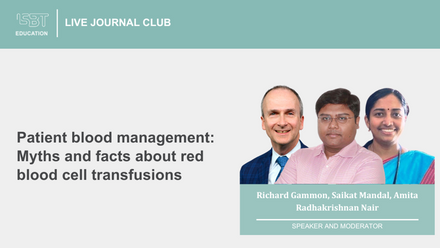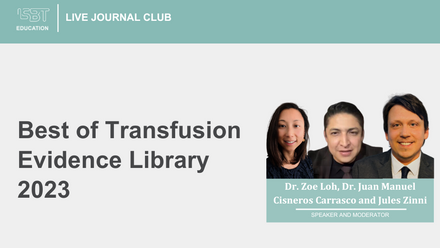Small-Volume Blood Collection Tubes to Reduce Transfusions in Intensive Care: The STRATUS Randomized Clinical Trial
Deborah M Siegal1,2,3,4, Emilie P Belley-Côté1,2,5, Shun Fu Lee1,5, Stephen Hill6, Frédérick D'Aragon7, Ryan Zarychanski8, Bram Rochwerg2,5, Michaël Chassé9, Alexandra Binnie10, Kimia Honarmand11, François Lauzier12, Ian Ball11, Waleed Al-Hazzani2,13, Patrick Archambault14, Erick Duan2,15, Kosar Khwaja16, François Lellouche17, Paul Lysecki18, François Marquis19, Jean-François Naud20, Jason Shahin21, Jennifer Shea22, Jennifer L Y Tsang2,15, Han Ting Wang19, Mark Crowther2,13, Donald M Arnold2, Emily Di Sante1, Gladys Marfo1, Tanya Kovalova1, Sylvanus Fonguh1, Jessica Vincent1, Stuart J Connolly1,2
1Population Health Research Institute, McMaster University, Hamilton, Ontario, Canada.2Department of Medicine, McMaster University, Hamilton, Ontario, Canada.
3Department of Medicine, University of Ottawa, Ottawa, Ontario, Canada.
4Clinical Epidemiology Program, Ottawa Hospital Research Institute, Ottawa, Ontario, Canada.
5Department of Health Research Methods, Evidence, and Impact, McMaster University, Hamilton, Ontario, Canada.
6Department of Pathology and Molecular Medicine, McMaster University, Hamilton, Ontario, Canada.
7Department of Anesthesiology, Université de Sherbrooke, Sherbrooke, Québec, Canada.
8Department of Internal Medicine, University of Manitoba, Winnipeg, Manitoba, Canada.
9Centre Hospitalier de l'Université de Montréal, Department of Medicine, Université de Montréal, Montréal, Québec, Canada.
10William Osler Health System - Brampton Civic and Etobicoke General, Brampton, Ontario, Canada.
11London Health Sciences Centre - CCTC and University Hospital, Department of Medicine, Western University, London, Ontario, Canada.
12Centre Hospitalier Universitaire de Québec - Enfant-Jésus and Hôtel-Dieu, Department of Medicine, Department of Anesthesiology, Université Laval, Québec, Canada.
13St. Joseph's Healthcare Hamilton, Hamilton, Ontario, Canada.
14Hôtel-Dieu de Lévis, Department of Family Medicine and Urgent Care, Université Laval, Québec, Canada.
15Niagara Health - St. Catharine's General Hospital, St. Catharine's, Ontario, Canada.
16Montreal General Hospital, Departments of Surgery and Critical Care Medicine, McGill University, Montréal, Québec, Canada.
17Institut Universitaire de Cardiologie et de Pneumologie de Québec, Department of Medicine, Université Laval, Québec, Canada.
18Joseph Brant Hospital, Department of Surgery, McMaster University, Hamilton, Ontario, Canada.
19Maisonneuve-Rosemont, Department of Medicine, Université de Montréal, Montréal, Québec, Canada.
20Centre intégré universitaire de santé et de services sociaux de la Mauricie-et-du-Centre-du-Québec-CHAUR, Trois-Rivières, Québec, Canada.
21Royal Victoria Hospital, Department of Critical Care, McGill University, Montréal, Québec, Canada.
22Saint John Regional Hospital, Department of Medicine, Memorial University, St. John, New Brunswick, Canada.
PMID: 37824152 PMCID: PMC10570918 (available on 2024-04-12) DOI: 10.1001/jama.2023.20820
Abstract
Importance:
Blood collection for laboratory testing in intensive care unit (ICU) patients is a modifiable contributor to anemia and red blood cell (RBC) transfusion. Most blood withdrawn is not required for analysis and is discarded.
Objective:
To determine whether transitioning from standard-volume to small-volume vacuum tubes for blood collection in ICUs reduces RBC transfusion without compromising laboratory testing procedures.
Design, setting, and participants:
Stepped-wedge cluster randomized trial in 25 adult medical-surgical ICUs in Canada (February 5, 2019 to January 21, 2021).
Interventions:
ICUs were randomized to transition from standard-volume (n = 10 940) to small-volume tubes (n = 10 261) for laboratory testing.
Main outcomes and measures:
The primary outcome was RBC transfusion (units per patient per ICU stay). Secondary outcomes were patients receiving at least 1 RBC transfusion, hemoglobin decrease during ICU stay (adjusted for RBC transfusion), specimens with insufficient volume for testing, length of stay in the ICU and hospital, and mortality in the ICU and hospital. The primary analysis included patients admitted for 48 hours or more, excluding those admitted during a 5.5-month COVID-19-related trial hiatus.
Results:
In the primary analysis of 21201 patients (mean age, 63.5 years; 39.9% female), which excluded 6210 patients admitted during the early COVID-19 pandemic, there was no significant difference in RBC units per patient per ICU stay (relative risk [RR], 0.91 [95% CI, 0.79 to 1.05]; P = .19; absolute reduction of 7.24 RBC units/100 patients per ICU stay [95% CI, -3.28 to 19.44]). In a prespecified secondary analysis (n = 27 411 patients), RBC units per patient per ICU stay decreased after transition from standard-volume to small-volume tubes (RR, 0.88 [95% CI, 0.77 to 1.00]; P = .04; absolute reduction of 9.84 RBC units/100 patients per ICU stay [95% CI, 0.24 to 20.76]). Median decrease in transfusion-adjusted hemoglobin was not statistically different in the primary population (mean difference, 0.10 g/dL [95% CI, -0.04 to 0.23]) and lower in the secondary population (mean difference, 0.17 g/dL [95% CI, 0.05 to 0.29]). Specimens with insufficient quantity for analysis were rare (≤0.03%) before and after transition.
Conclusions and relevance:
Use of small-volume blood collection tubes in the ICU may decrease RBC transfusions without affecting laboratory analysis.
Trial registration: ClinicalTrials.gov Identifier: NCT03578419.



















